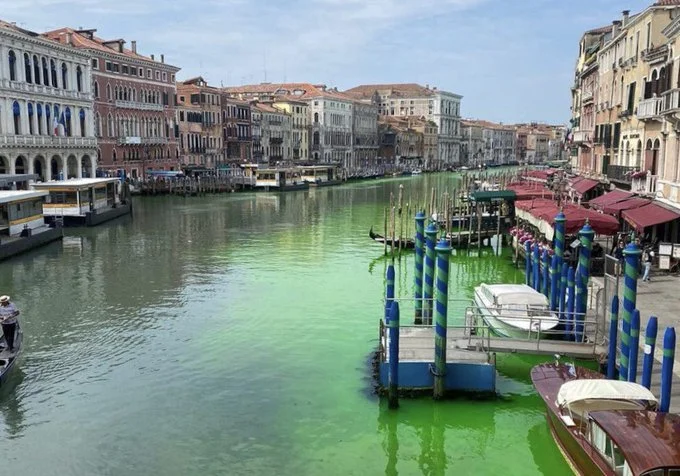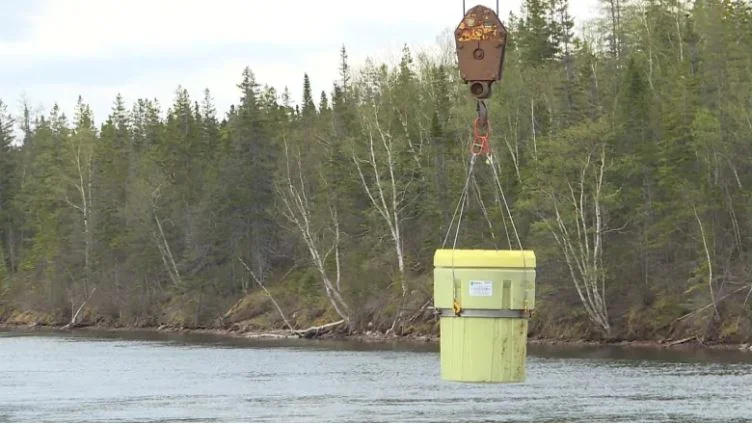A mysterious patch of fluorescent green water that appeared in Venice's famed Grand Canal Sunday was caused by a chemical commonly used in underwater construction to help identify leaks, environmental authorities say. The chemical – fluorescein – is non-toxic. It remains unclear how the substance ended up in the canal, but the Regional Agency for the Environment in Venice (ARPAV) said given the volume released it was unlikely to be an accident.
Venice authorities investigate after canal turns fluorescent green
Venetian authorities are investigating after a patch of fluorescent green water appeared in the famed Grand Canal on Sunday morning. “This morning a patch of phosphorescent green liquid appeared in the Grand Canal of Venice, reported by some residents near the Rialto Bridge. The prefect has called an urgent meeting with the police to investigate the origin of the liquid,” Veneto regional president Luca Zaia wrote on Twitter.
Tests show Deer Lake drinking water clean, despite concern over barrels found in supply
Testing has found Deer Lake's drinking water is safe, after barrels were found in the canal that supplies the town's water.
"It showed that the drinking water was safe during the whole period and [there was] no detrimental effect to the drinking water," said Darren Pelley, general manager of Kruger-owned Corner Brook Pulp and Paper.
"We're pleased that that's the conclusion, the report was fairly extensive."
Kruger hauls decades-old barrels from the depths of Deer Lake's water supply
Fifty-five metal barrels, left for decades to deteriorate at the bottom of the Humber Canal, are seeing the light of day this week as Corner Brook Pulp and Paper undertakes a big cleanup. The debris predates the mill's current ownership under Kruger, but the company estimates they've been decaying since about the 1950s, although their presence went undetected until residents raised red flags two years ago. The 11-kilometre canal supplies the Deer Lake Powerhouse, which in turn generates electricity for the mill, and also does double duty as the town of Deer Lake's water supply.
A century of water: As Winnipeg aqueduct turns 100, Shoal Lake finds freedom
The taps to Winnipeg's drinking water were first turned on in April 1919, but as the city celebrated its engineering feat and raised glasses of that clear liquid, another community's fortunes suddenly turned dark. Construction of a new aqueduct plunged Shoal Lake 40 into a forced isolation that it is only now emerging from, 100 years after Winnipeg's politicians locked their sights on the water that cradles the First Nation at the Manitoba–Ontario border. "The price that our community has paid for one community to benefit from that resource, it's just mind-boggling," said Shoal Lake 40 Chief Erwin Redsky.






